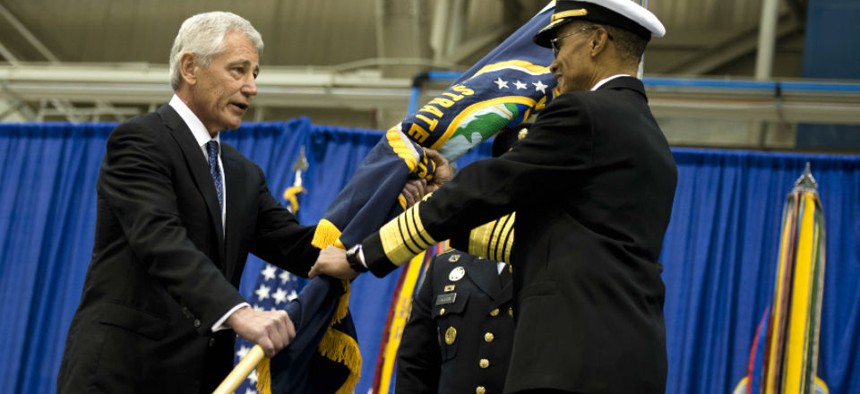Audit Questions Savings in Pentagon Plan to Cut Strategic Command, Other Senior Staff
Plan would exclude from consideration a lot of positions that could be cut, GAO finds.
A Pentagon plan to cut costs by reducing senior staff at Strategic Command and other military headquarters may not produce significant savings, an audit says.
Defense Secretary Chuck Hagel last year ordered across-the-board reductions of 20 percent of the budget of all military command headquarters. Congress directed its Government Accountability Office to examine the effects of those directed cuts on the Pentagon's three "functional component commands," which are Strategic Command, Special Operations Command and Transportation Command.
In findings released last Thursday, the analysts said that limiting cuts to just those personnel in management roles at the command organizations would potentially exclude from consideration more than 75 percent of the headquarters positions.
In their 73-page report, auditors "found that less than a quarter of the positions at the functional combatant commands are considered to be management headquarters even though many positions appear to be performing management headquarters functions such as planning, budgeting and developing policies."
The GAO officials concluded the Pentagon does not have "a clear or accurate accounting of the resources being devoted to management headquarters to use as a starting point to track reductions," in part because it relies on self-reported data from the commands, which can be inconsistent.
Strategic Command is responsible for detecting and deterring strategic attacks against the United States and its allies. The Nebraska-based command has combat responsibility over all U.S. ballistic missile submarines, nuclear-capable bombers and intercontinental ballistic missiles.
Currently headed by Adm. Cecil Haney, the command in fiscal 2013 spent $623.4 million supporting its headquarters operations, which cover service component commands such as Air Force Global Strike Command; coordinating centers such as the Center for Combating Weapons of Mass Destruction; and one sub-unified command -- Cyber Command, according to the report. Comparatively, less than $200 million was spent in fiscal 2001 on STRATCOM headquarters activities.
The nuclear command also has seen the number of military and civilian personnel assigned to it and its sub-commands balloon in recent years, rising from fewer than 2,000 people in fiscal 2001 to a total of 4,466 authorized positions in fiscal 2013.
Much of that recent growth can be attributed to the creation in 2009 of Global Strike Command, which was established to address shortcomings in the Air Force's management of its nuclear bomber and ICBM missions. The service component command had just under 600 military and civilian personnel assigned to it in the last fiscal year.
The Pentagon partially agreed with the congressional auditors' recommendation that it reconsider its decision to focus military command cuts to just management positions at headquarters. At the same time, the department argued the recommendation fell outside the scope of the GAO review mandate, which was to examine the resources and personnel assigned to the three functional commands.




